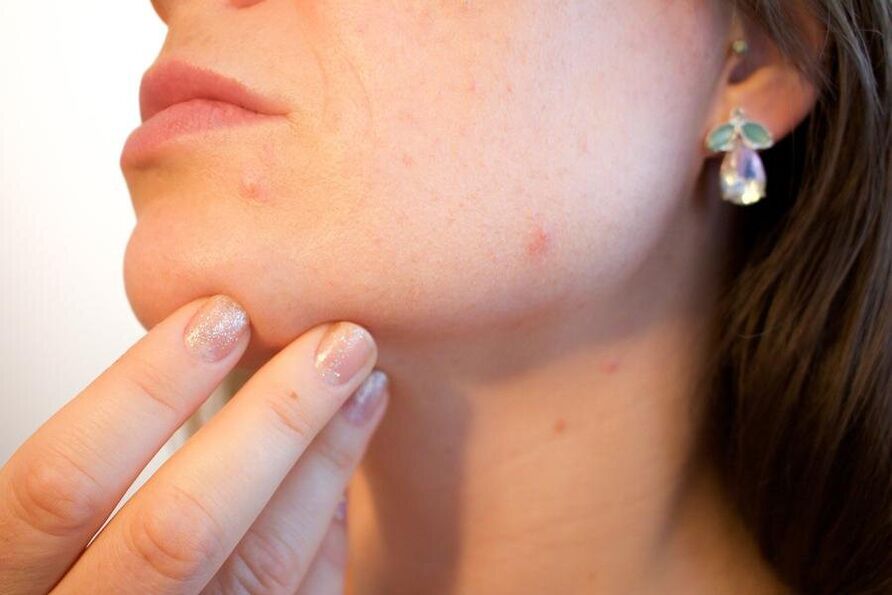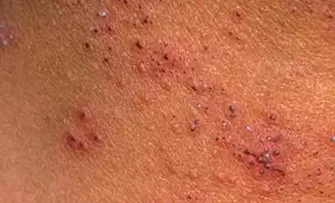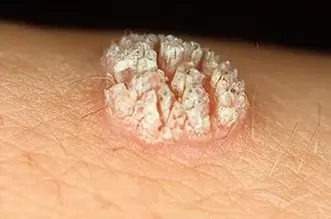To fully answer this question, it is necessary to delve into the nature of infection intrusion into the human body. Many experts put a lot of effort into uncovering the entire nature of the emergence and development of HPV as we know it today. Human papillomaviruses have been studied very carefully over the past 30 years. As a result, over the course of the research, more than 100 strains with the properties of this disease were discovered. The types of papillomas on the body are not the same type, but are either malignant or benign.

HPV is a tumor that appears anywhere on the skin or inner covering. Unfortunately, some strains subsequently turned pathologically into malignancies. You need to fully understand all of these types from "A" to "Z".
type of skin growth
A weakened immune system indicates growths on the body's skin. It is she who has a protective function and acts as a kind of barrier. When a certain type of human papillomavirus enters the body, immunity does not allow HPV to take root. This has been proven by research.
Long-term medical practice has made it possible to classify all papillomas on the skin into three types:
- Non-carcinogenic types of HPV (this growth does not cause cancer, but reduces immunity).
- The virus is not a highly carcinogenic type (low threshold for pathology).
- Infection carcinogenic risk (due to high threshold in oncology).
Signs of papillomavirus found on the skin are small but cause for concern. Do not leave growth unattended (especially in the genital area). To get a complete picture of the type that causes the tumor to appear, you should contact a dermatologist. First, the doctor will perform a visual examination and, if necessary, write down directions for further analysis and research.

If you haven't figured out what kind of papilloma you have, don't start self-medicating -- it could have irreversible consequences.
It is important to consult your doctor about the prescription of antiviral therapy. Removal of a papilloma without medical treatment does not guarantee lasting results because with the next drop in immunity, there is a chance that the papilloma will re-form due to the activity of the virus.
The number of existing tumors is in the dozens. You need to figure out what a papilloma is, and remember that the entire range of growth presented is divided into five categories. They are classified according to symptoms, color scheme, and cancer risk. We'll cover each group in more detail later. Therefore, the types of papilloma are divided into 5 types.
The first is simple papilloma
Group 1 - simple papilloma. Another name is common or vulgar growth. This type of papilloma is common. Visible signs of small growths appear on the skin. During the development of any known type of papilloma, it transforms into a dark keratinized nodule. Common warts exist on the skin in single forms and in groups. Favorite places for moles are the hands (the inside and outside of the hands) and the lower part of the face (mainly the lips and chin).
It should be noted that there are plantar papillomas, they are practically indistinguishable from ordinary growths externally, only the keratinized shell gives their attribution. This wart can cause discomfort when walking. Getting rid of them isn't easy, but it's possible at home.
The second is flat

Group II - flat papilloma. A characteristic of this species is a set of manifestations of growth accumulation. They don't actually have bulges and are darker in color.
The growths are round, elongated, and oval in shape, 1-2 mm above the level of the skin. Flat papilloma is located around the mouth, face, upper body. Papillomas sometimes form in the neck. Distribution location - upper body. In some cases, they are observed in the genital area. Cutaneous papillomas still belong to this group and appear mainly in adolescence. Warts are confined to the neck, face, and hands in young adults. The main cause of appearance is the failure of the immune system.
There are also papillomas on the labia, cervix in girls, penis in men, rectum, near the anus. These formations are arranged in groups and merge with each other. Flat flesh-colored papillomas that form under the influence of 10, 49, 28 types of papillomaviruses, sometimes slightly darker than the rest of the skin.
The third type - pointed
Group III - apical papilloma of the face and other areas. Another name is warts. The main site of tumor dislocation is the mucosa. Mostly, they affect the genitals and body, ruining its appearance, and affecting everything inside. It is these strains that are classified as carcinogenic risk. It is characterized by rapid development from one specimen to multiple specimens in a short period of time. The penetration method of condyloma acuminatum is sexual intercourse. For pregnant women, the presence of pointed moles is undesirable because of the risk of infecting the baby. The latter can occur when the newborn passes through the birth canal.
The fourth type - filamentous papilloma
Group IV - Filamentous special papilloma on the body. In scientific circles, they are called acrochord. A feature of the tumor is the obligatory legs that support the mole itself. The age categories are middle-aged, as well as older women and men. This growth is often called senescence.
HPV has developed in the body for many years, and only after a while does it manifest as warts. Where tumors form: eyelids, neck, armpits, groin area, and chest. These growths are traumatic and often interrupted by inadvertence. This is a very dangerous phenomenon, so the wound must be shown to the doctor.
Category 5 - Internal
Group V - Internal moles. This subgroup includes all tumors that develop on internal organs of the body. These include warts located on the walls of the stomach and rectum. Growths in the mouth and throat, formation in the bladder. The presence of condyloma acuminatum in this group cannot be independently identified as this requires a special diagnosis. But the presence of the growth can give off severe symptoms. It is absolutely impossible to know how harmful the tumor is to the human body. Research work is carried out once a year, and new results are continuously given.
But one thing is clear, this fact cannot be ignored. For example, the growth of the bladder can cause internal bleeding, or eventually become cancerous. Warts in the throat can disrupt breathing and the ability to speak. By the way, the latter can also be localized to newborns - so pregnant women need to be especially vigilant.
Causes of papilloma
HPV is an infection that, when it enters the body, causes various growths. Some tumor strains transform into cancerous tumors. We have listed the most common causes of infection:
- Constantly changing sexual partners;
- The presence of bad habits (drinking, smoking, drugs);
- decreased immune defense;
- Violation of the physiological processes of the body;
- Inattentive attitude towards personal hygiene (use of other people's personal items).
General symptoms of all types
The most likely manifestation of HPV in a woman is an external growth. All features depend on the location of the tumor. Let's consider the obvious symptoms in more detail, depending on what type of papilloma it is and its type.
- Condyloma acuminatum. It occurs on the mucous membranes that line the reproductive organs, larynx, mouth, stomach, and rectum. On the genitals, it is accompanied by mild itching and an unpleasant smell. Ignoring this type of growth is not advisable because carcinogenic pathology can lead to catastrophic consequences.
- Intraductal papilloma. The origin of the breast duct. Characteristic signs of growth presence: redness, slight itching and burning around the nipple. Gently pressing on the nipple will drain pus or green discharge. Breast papilloma is not initially cancer, but in a neglected state, it can transform into a malignant tumor.
- Plantar warts. The growth is characterized by the presence of keratinized corn formation on the sole. When walking, pressing and squeezing can cause discomfort. The pain sensation manifests as severe pain in the tumor area.
- Papilloma in throat. There are no obvious symptoms in the initial stages of growth, but during development, symptoms can intensify. Changes in voice, feeling of coma in the throat, disturbance of breathing function. Difficulty swallowing saliva and food.
- Flat warts. They occur on the face and lower part of the arm (the outside of the hand) in adolescents. There are no serious symptoms. Just the occasional slight itching.
Treat tumors on the skin
When you notice a growth on your body, contact a professional doctor - a dermatologist, who can prescribe treatment. Do not self-medicate, as some strains are highly carcinogenic types (this applies to both men and women).
External signs of HPV (human papillomavirus) in the form of tumors are not all. These growths can easily transform into malignant tumors, which are already dangerous. It should be noted that HPV remains in the body for life. As a result, the activity can only be reduced, or in other words, the infection can be put into a "sleep" state. But laser therapy will help eliminate moles completely and painlessly.
Pay attention to the external changes of the skin and seek medical attention in time. Take a vitamin complex and support the immune system. Follow certain rules to keep your health safe. Also, the types of facial papilloma, as has been discovered and can be seen on the internet in pictures, are different and you need to understand what pressure it is before proceeding with the removal. Any description can be found on the World Wide Web.























